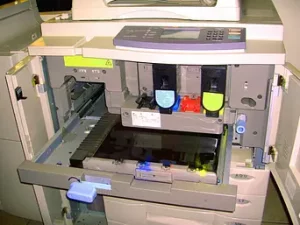Chromium (Element)
What Is Chromium?
Chromium is a hard, blue-tinged silvery metal with a mirror-like shine. Found mainly in the mineral chromite, it is primarily harvested in South Africa, India, Kazakhstan, and Turkey. All humans contain traces of chromium because it helps us use glucose, and we take in about one milligram a day. However, it is poisonous in large quantities and extremely toxic.
Chromium has myriad uses in manufacturing, with its most significant contribution being the creation of stainless steel, a vital material in countless industries. It gives stainless steel its ‘stainless’ quality because of its polished finish and corrosion resistance.
What Is Chromium Used for?
In addition to being an element in stainless steel, chromium’s other uses include:
- Producing silver alloys when combined with iron or nickel
- Tanning and dying leather
- Chromium dust is used to make bright green, red, orange, and yellow paint pigments
- Rubies are turned red, and emeralds and glass bottles turned green using chromium compounds
- Toner inks and other dyes
Chromium was historically used in “chrome plating”, and surrounded bumpers and other automobile parts and plate plastics for bathroom fittings. Chrome plating is still utilized in many countries, and is often used in the manufacture of modern electronic devices. With proper e-waste recycling, however, chromium and other potentially harmful elements can be kept out of the environment.
Health Effects of Chromium
Chromium is toxic if inhaled, ingested, touched excessively, and can affect the skin, eyes, blood, and respiratory systems. Steel and cement workers, leather smiths or factory workers in the garment industry, and those working with copy machines and toner inks all risk exposure.
Some symptoms of chromium exposure include:
- Pulmonary sensitization
- Hematological toxicity
- Lung cancer up to twenty years after exposure
- Nasal and sinus cancer
- Moderate to severe liver damage
- Cardiovascular collapse
Chromium exposure can even cause DNA damage, like gene mutations and chromosomal abnormalities, both in the person exposed and in fetuses if the person is pregnant. It’s important, then, to arrange for proper electronic and IT equipment recycling to protect yourself and others from dangerous chromium exposure.
How to Properly Dispose of Chromium
Chromium is essential to myriad industries and products, making it just as necessary as it is dangerous. For those who work with chromium, there is ample training on how to work with toxic chemicals, but little help when the time comes to dispose of them after the work is done. However, proper disposal is vital to protect yourself and others who may come into contact with chromium once it’s no longer in use.
There are very few safe ways to dispose of chromium, and recycling is a much better option than outright disposal. Instead of risking lives by trying to dispose of chromium yourself, using a responsible e-waste recycling center like Newtech Recycling is your safest option.
Newtech Recycling provides any service you might need to help with e-waste, IT hardware, or computer recycling. As well as on-site pick-up and recycling services, Newtech Recycling offers corporate packages for companies that have large toners, dyes, or metal parts that contain chromium.
If you are in our service area and have chromium compounds to dispose of, contact Newtech Recycling today. You’ll never have to worry about your chromium waste again.


